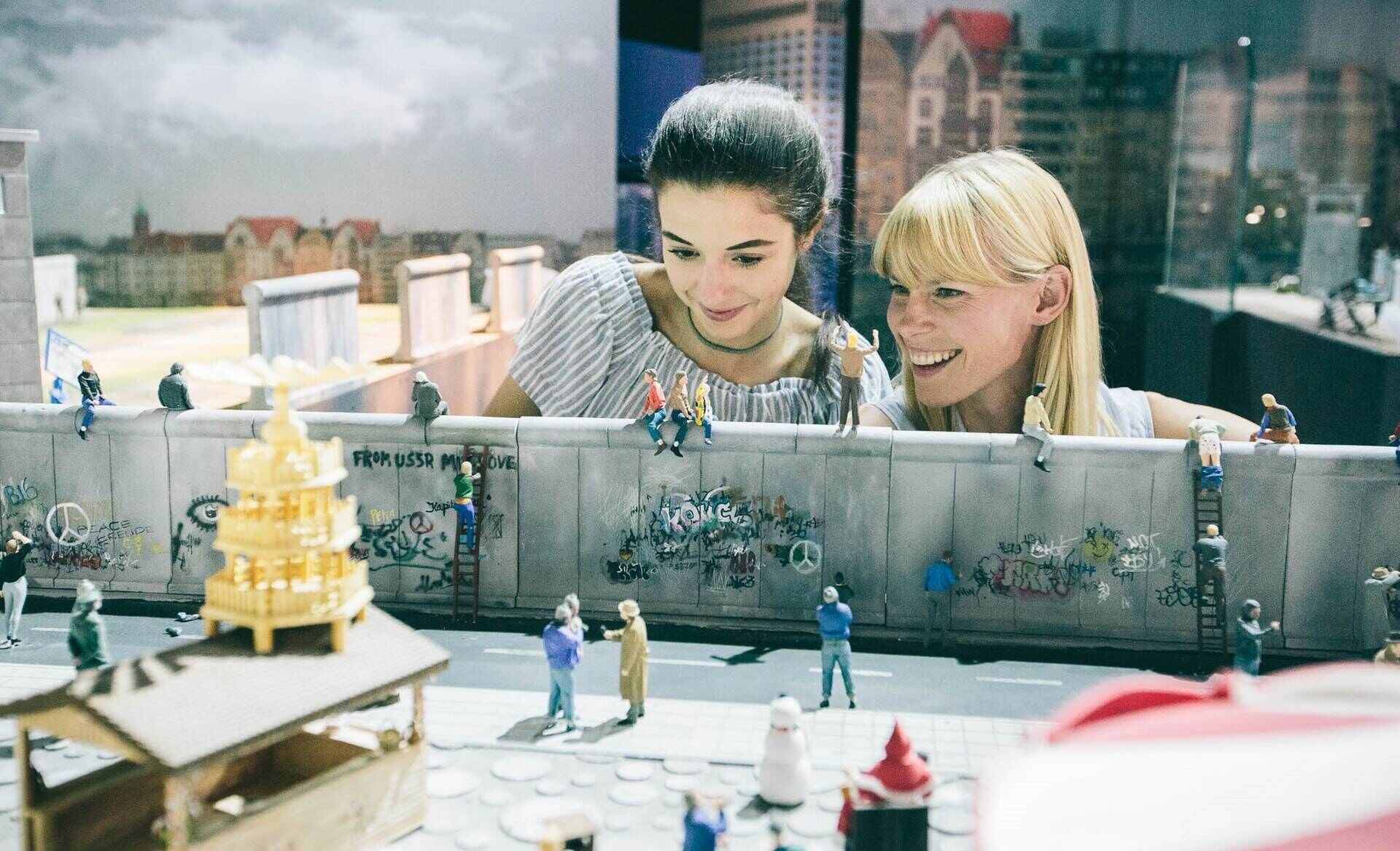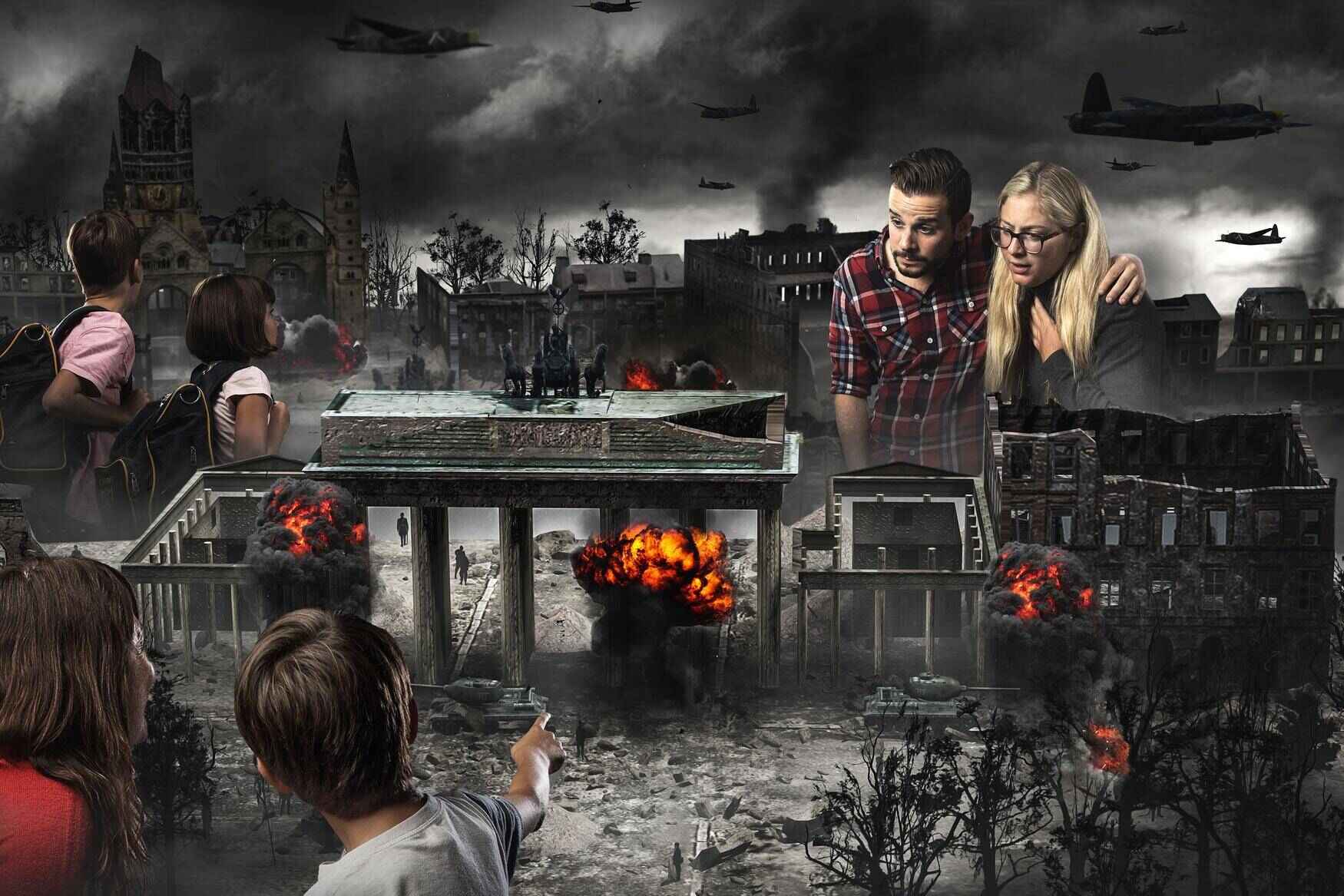Little BIG City Berlin is a unique attraction that aims to bring 750 years of Berlin history to life for everyone. Instead of a boring museum tour and a dry historical summary from the guide, people who choose Little BIG City Berlin get a real journey through time.
The interactive attraction takes you through Berlin's different eras, from the Middle Ages to the reunification of Germany. Thanks to state-of-the-art special effects, visitors can see how all of Berlin's iconic landmarks, such as the Reichstag and the Brandenburg Gate, came into being, take part in major historical events and even try their hand at tearing down the Berlin Wall.
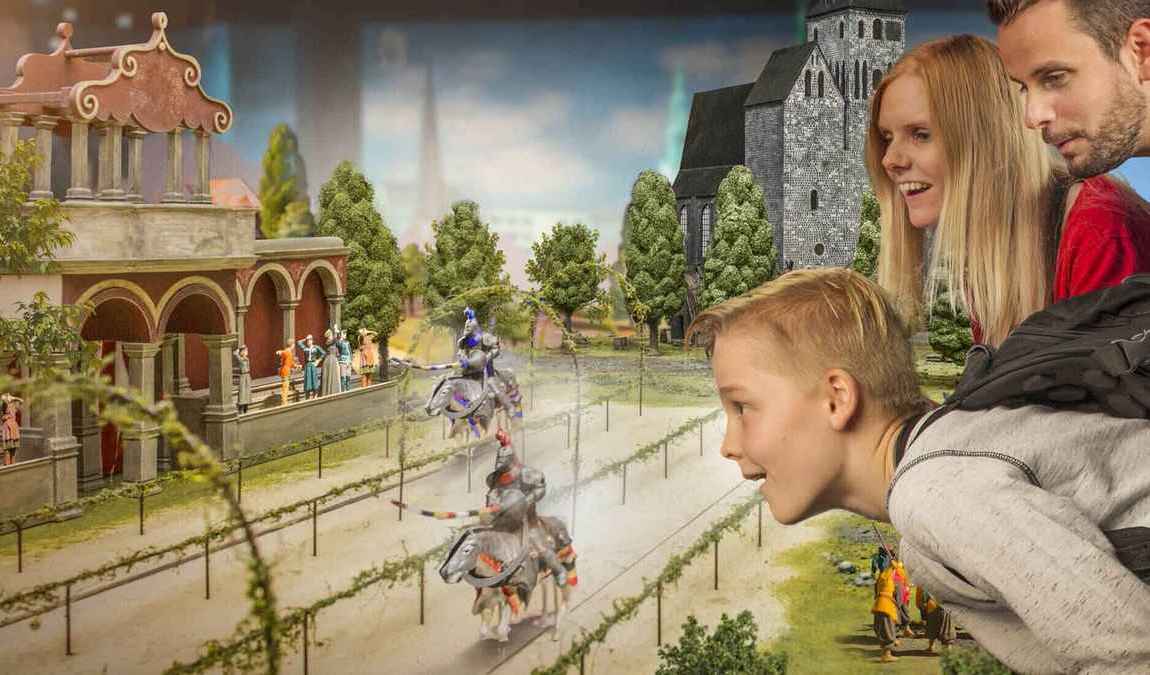
Visitors to Little BIG City Berlin will not only encounter iconic places in Berlin, but also famous personalities who have left their mark on the history of Germany and its capital. During the Little BIG City Berlin tour, for example, guests will meet the famous 19th century German landscape painter August Matthias Hagen, style icon and the greatest classic actress in world cinema, Marlene Dietrich, as well as other historical figures.
The attraction's vast array of historic buildings, holograms, countless projections and over 6,000 "inhabitants" from different eras not only show Berlin's history, but bring it to life. A simple history lesson is transformed into a truly interactive show with many impressive special effects.
History of the museum
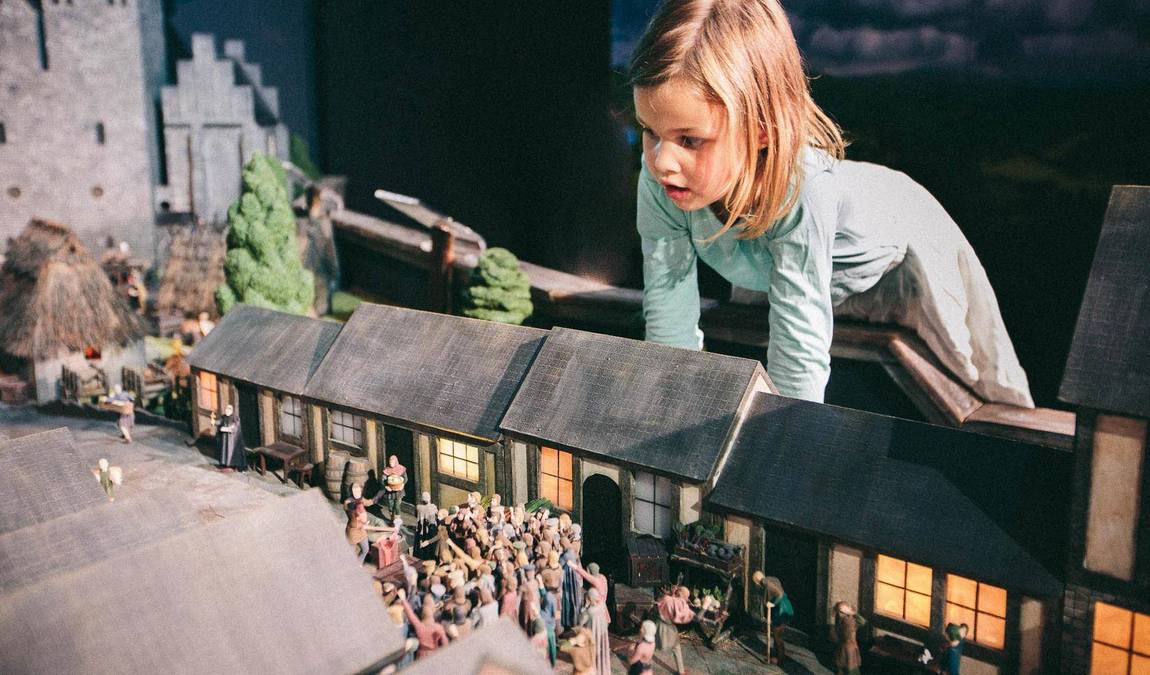
For 30 months, a team of 40 people, including creatives, artists, fashion designers, carpenters, mechanical engineers and 3D printing specialists, painstakingly designed and created Little BIG City Berlin. Visitors are greeted by actors and "residents" whose characters are meticulously recreated in every detail, from period clothing to individual styles.
In total, around 6,000 mini-humans "live" in Little BIG City Berlin, and each citizen has his or her own story, many of which are based on real events. For example, the ghost of the White Lady of Hohenzollern Castle, the pioneer of world aviation and legendary German engineer Otto Lilienthal, the bank robbers the Sass brothers, nicknamed the "Robin Hoods of Berlin", and many more.
Next door to the museum is Sea Life Berlin, which we recommend to visit with children.
Architectural drawings, photographs and a Google Street View were used to create each building. Using advanced software, everything is shown to scale. For the buildings, individual parts were made from 3D printed plastic, machined acrylic, plywood and MDF, cut to a tenth of a millimetre. For the larger buildings, FFF (Fused Filament Fabrication) was used, a new process that creates thousands of 0.2mm thick layers at a time to create larger project structures.
All the buildings were painted to look antique. It took 15-20 hours to paint each structure as the designers wanted the miniature to be as close to the original as possible.
The most impressive part of the attraction is the reconstruction of the devastating 1933 fire at the seat of the German government. The image of the Reichstag in flames is one that remains with visitors.
It took around 120 hours to print each of the Reichstag's parapet towers on a 3D printer. To achieve the stunning effect of the Reichstag in flames, seven projectors are used to create images measuring 4m by 2m, creating a hyper-realistic image of raging flames.
Zones and installations
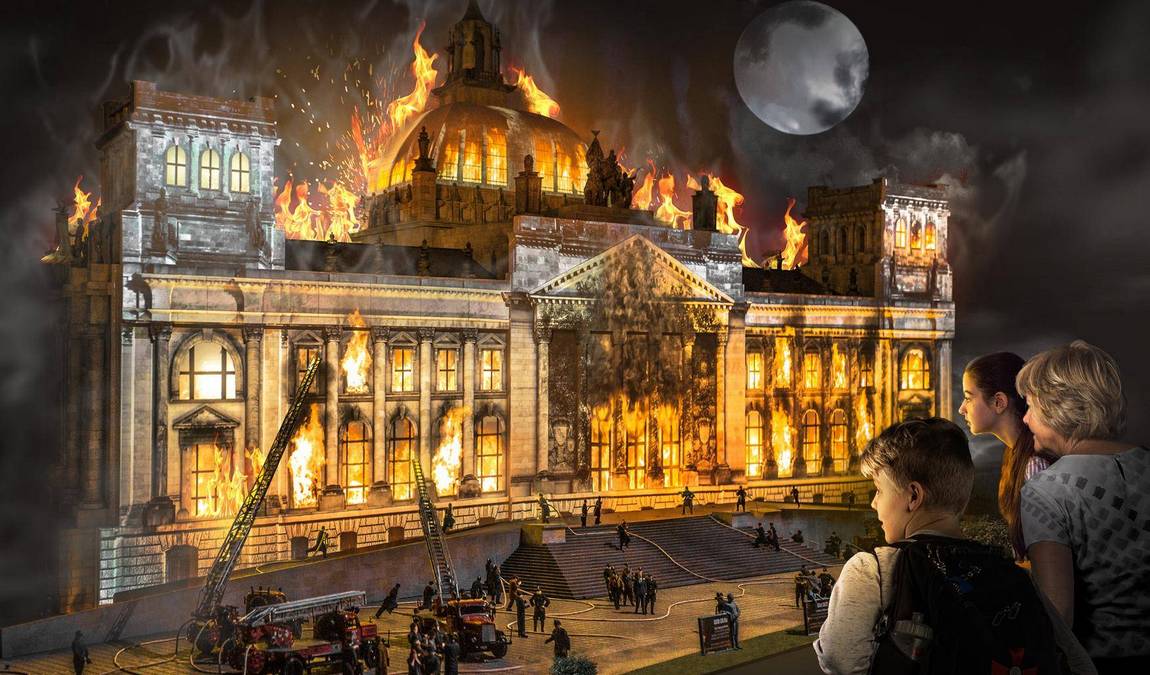
The attraction is made up of several zones, each corresponding to a different era:
- Early Berlin. The 1100s, the period of Berlin's beginnings, is represented here. The plague, the Thirty Years' War, medieval feasts and contests are all depicted in the first location.
- The Industrial Revolution. In the 1800s and 1900s, Berlin underwent massive industrialisation, an industrial boom that changed the face of the German capital beyond recognition. The interactive exhibits in this area allow visitors to get up close and personal with the innovative machines of the time. You can also see Werner von Siemens switch on the first electric street light, attend a party to celebrate the production of the thousandth locomotive at the Borsig factory and meet the first women's rights activists.
- Weimar Republic. This is the most original part of the attraction, where visitors experience the glamour and decadence of Berlin in the Weimar Republic of the 1900s. Jazz clubs, the first amusement parks, the red light district and the glittering Marlene Dietrich on stage are all part of the heyday of the Weimar Republic.
- Berlin in 1933. The fourth section commemorates some of the saddest events in Berlin's history. Here visitors learn about the Reichstag fire, the Nazi burning of student books under the slogan "Down with the anti-German spirit" and the wave of anti-Jewish pogroms known as Kristallnacht (literally "Night of Broken Glass").
- Destroyed Berlin. Shows the devastation of the Second World War and the extensive rebuilding of the city. Reconstructions of tank battles can also be seen in this area.
- Divided city. The Berlin Wall divided East and West Germany. Tourists are invited to tear down the wall themselves to the tune of David Hasselhoff's 'Looking for Freedom'.
Visitors to the attraction can expect to see
- 100 historic buildings across the city;
- Over 6,000 'residents' from different eras, showing how Berlin used to be and how it is now;
- 30 projectors that bring the city's history to life;
- 15 holograms telling personal stories;
- 50 buttons, pedals and games that bring history to life in an interactive and entertaining way.
The attraction is presented in two languages — German and English.
Tips for tourists
- Although Little BIG City Berlin is open to visitors from three years of age, the recommended age is six.
- It is advisable to have at least a basic knowledge of German or English, otherwise around 80% of the information will simply be incomprehensible. The tour tells not only well-known historical facts, but also urban legends, jokes, parables and much more.
- It is better to buy combined tickets (visit Little BIG City Berlin + another attraction or tour, e.g. Madame Tussauds).
- It is worth spending at least an hour at the attraction. The exhibition is not very large, but there is a lot of information about each area. The attraction is not very large, but there is a lot of information about each area.
- For €5 you can buy a detailed guide with a description of the attraction, the rules of the ride, instructions and other important information. In the Little BIG City Berlin guide, visitors will find many famous and secret stories about Berlin, urban legends and tales that will make their visit to the attraction even more exciting and informative.
- Please note that children under 15 years of age must be accompanied by an adult.


